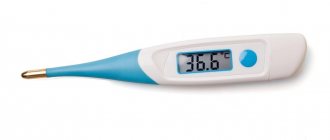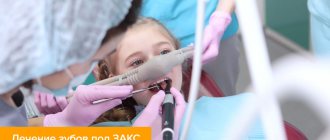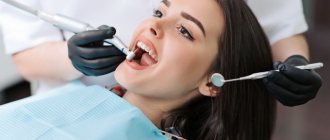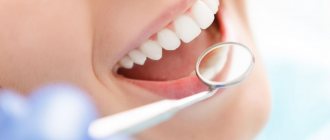Leptotrichosis is a disease of the oropharynx caused by the bacterium Leptothrix buccalis. This is a conditionally pathogenic microflora, since leptotrichia constantly live in the human oral cavity. In order for the disease to develop, some provoking factor is necessary. Children are very often susceptible to this disease. The bacteria multiply quickly, usually affecting the back of the tongue, but can also develop on other surfaces of the oral cavity.
Causes
The provoking factors causing leptotrichosis are:
- Diseases of the immune system, incl. AIDS.
- Fungal infections, candidiasis.
- Diabetes.
- Diseases of the gastrointestinal tract.
- Diseases of the oral cavity leading to degeneration of the epithelium of the mucous membrane.
- Metabolic disorders, carbohydrate-protein metabolism.
- Lack of vitamins C and B.
- Taking certain medications (corticosteroids, antibiotics).
Insufficient oral hygiene can also provoke the development of the disease. It is especially often the cause of leptotrichosis in children.
How is leptotrichosis diagnosed and treated?
The diagnosis is based on a characteristic microscopic picture: the detection of chains of bacteria in the form of a dot-dash. To confirm the diagnosis of a disease associated with Leptotrichia amnionii, culture is used (unlike other leptotrichia, it is not cultured on blood agar) and PCR (16S rDNA). Standard treatment for leptotrichosis has not currently been developed. In typical cases, antibiotic therapy is used. Sensitivity of leptotrichia to beta-lactam antibiotics, clindamycin, metranidazole, tetracycline and chloramphenicol, and resistance to macrolides, aminoglycosides and fluoroquinolones have been noted.
Symptoms
Leptotrichosis has pronounced symptoms:
- White deposits form on the surface of the mucous membrane. As a rule, they are localized on the root of the tongue, tonsils, and dorsum of the tongue.
- Dense plaques develop under the plaque, which are clearly visible if the deposits are removed.
- The patient feels a burning sensation and pain in the oral cavity. Sometimes these symptoms are so severe that it becomes difficult for the patient to speak or eat.
- There are small “tweezers” on the surface of the plaques, which cause a sore throat and a feeling of a foreign body.
How dangerous is leptothrix and where does it come from?
Long-term parasitism of the bacterium on the oral mucosa leads to infection of nearby tissues and the development of leptotrichosis sepsis. Often manifested in the form of oral stomatitis. Some experts consider leptotrichosis to be similar to HIV infection.
The disease was found in 5% of women undergoing gynecological tests - vaginal smears. Recent foreign studies have made it possible to determine the connection between leptotrichia and bacterial vaginosis (vaginal dysbiosis). The established connection suggests that leptothrix is one of the signs of asymptomatic vaginosis in women.
It is quite easy to catch this infectious pathogen. The microorganism is transmitted sexually and domestically: through the water of stagnant reservoirs, insufficiently clean tap water, dirty bed linen, towels, etc. That is, it is possible to infect a sexual partner with leptotrichosis during sex. It is advisable for both to undergo treatment.
There is an opinion that intrauterine devices are a common cause for the development of the disease.
Back to contents
Diagnosis and treatment
Despite the pronounced symptoms, visual examination alone is not enough to make an accurate diagnosis. The doctor will definitely prescribe an additional examination of a smear taken from the oral mucosa. The diagnosis is made when leptothrix bacteria are detected in the smear.
In rare cases, leptotrichosis resolves spontaneously. Most often, treatment is required, and the effectiveness of medications varies greatly between patients. As a rule, leptotrichosis is persistent, and complete recovery requires a long time, the patient’s patience and strict adherence to the doctor’s prescriptions. Leptotrichosis can be treated using different methods and their combinations:
- Drug treatment. As a rule, the doctor prescribes a course of anibiotics and, in addition to it, washing the affected areas with antiseptic solutions. Drug treatment is long-term, taking several months.
- Cryotherapy. One of the modern methods, in which the affected areas are frozen. The procedure is performed under local anesthesia. Cryotherapy is most often used as an additional treatment method.
- Physiotherapy. The oral cavity is treated with laser and ultraviolet radiation. As an independent method, physiotherapy is effective only if all plaques are in the irradiation zone. Plaques not irradiated during the session are preserved. Physiotherapy is successfully combined with drug treatment and vitamin therapy.
Combined treatment programs achieve the greatest success. At the first stage, treatment with antibiotics and rinsing the throat and mouth with antiseptic solutions are prescribed. At the same time, treatment of diseases that provoked the development of leptotrichosis is carried out. The course of treatment is long, usually 3-4 months, but in most cases the combined effect gives a good effect.
What is leptothrix
Leptothrix (Leptothrix from Leptos thin + thrix hairs) or in modern terminology leptotrichia (Leptotrichia) is an anaerobic gram-negative bacterium belonging to the family Fusobacteriaceae, forming thin threads or “chains” (trichiae) with segmented ends and a thickening in the center with a diameter of 0.2 - 0.4 microns, which do not branch or bud. Leptorix is characterized by a microscopic sign - “dot-dash”. Optimal growth of the microorganism occurs in the presence of an increased concentration of CO2
| The previously used term Leptothrix (Leptotrichia) vaginalis is not currently used, since it has been established that there are several representatives of the genus Leptotrichia, which are found in the vagina, and they are separated into independent species, for example - Leptotrichia goodfellowii, Leptotrichia hofstadii, Leptotrichia shahii, Leptotrichia wadeii, etc. Therefore, they are designated by the generic term Leptothrix (Leptotrichia) species (spp.) |
Leptotrichosis is not a sexually transmitted disease and vaginal leptotrichosis is not transmitted to men. But why then, you ask, are issues related to leptothrix discussed on the site about sexually transmitted infections?
Firstly, leptothrix is often found in mixed sexual infections - trichomoniasis, chlamydia, candidiasis and bacterial vaginosis - i.e. its detection (and it is easily diagnosed by microscopy) should alert the doctor and provide for further more in-depth examination (PCR, bacteriological culture). Secondly, leptotrichosis of the oropharynx is classified as an HIV-associated disease (it is also often found in patients with a significant decrease in immunity, cancer patients, and people with blood diseases).
Third, recent studies have established the role of leptothrix (in modern terminology - leptotrichia) in the development of choriamnionitis, spontaneous abortion, postpartum sepsis, bacteremia in newborns and septic arthritis.
Side effects and contraindications
Terzhinan does not cause exacerbations of existing chronic pathologies. Due to the lack of systemic action, it does not interact with other medications. In rare cases, its use may cause itching and irritation of the mucous membranes. The only contraindication is individual intolerance to one or more components. Its signs:
- severe burning sensation;
- redness of the integument;
- swelling of the mucous membrane or severe pain at the injection site.
In isolated cases, Prednisolone in tablets can provoke erosive lesions of the vaginal walls. In addition, this hormone requires careful use of the drug for hypothyroidism, diabetes, and cardiovascular pathologies.
Features of the pathogen
Leptothrix are gram-negative, filamentous bacteria that do not form spores and prefer an anaerobic environment with very little oxygen (such bacteria are called microaerophilic).
Their name comes from Latin words meaning “fine hair”. In a smear, leptothrix looks like long thin or thick rods, which are arranged in chains resembling hairs. The external resemblance to actinomycete fungi initially led to a classification error: for a long time leptothrix was classified as a fungus.
They are usually grouped under the general name of the genus Leptothrix species (spp.).
Some researchers attribute Leptothrix to a special variety of lactobacilli, modified under the influence of environmental conditions.
They noticed that some women who go to gynecologists with complaints of heavy discharge have bacteria in their smears that form long chains.
In women who do not have symptoms of infection, lactobacilli are grouped in chains ranging from 5 to 15 microns in length. In women with complaints of heavy discharge, the length of one chain can reach 40-75 microns.
Until now, in the medical literature, the names of bacteria leptothrix and leptotrichia are considered synonymous. This is due to the confusion and difficulty of cultivating them.
Attention! In the new classifications, these are two different genera - Leptothrix and Leptotrichia! Be careful, bacteria cause completely different diseases!
Main purposes for the drug Terzhinan
According to the instructions, vaginal tablets are indicated for use:
- for trichomonas and vaginitis caused by pyogenic pathogens
- acute and chronic colpitis of nonspecific or mixed origin, including recurrent ones;
- vaginal candidiasis;
- vaginal dysbiosis;
- ureaplasmosis.
To prevent the development of infectious inflammation in the uterine cavity and adjacent tissues, Terzhinan is prescribed:
- before childbirth;
- insertion of intrauterine devices;
- surgical interventions;
- carrying out abortions, diagnostic curettages;
- before checking the patency of the fallopian tubes.
Medical experience shows that the drug is much more effective than its analogues in treating complicated cases of diseases and rarely causes disturbances in the internal microflora. Terzhinan is better than other intravaginal medications in relieving the symptoms of recurrent thrush and exacerbations of ureaplasmosis.
Treatment of vaginal candidiasis
Specific treatment aimed at eliminating vaginal candidiasis is carried out only after identifying the pathogen and if the patient has signs of the disease. The basis of therapy is specific antifungal agents: nystatin, clotrimazole, ketoconazole, fluconazole, nitrofungin and others. The specific drug, its dose, frequency of administration and course duration are selected individually depending on the characteristics of the course of the disease, the presence of concomitant pathologies and other factors.
If we are talking about an acute uncomplicated process, the drugs are prescribed in local form in the form of suppositories, vaginal tablets or creams. They are introduced directly into the genital tract, where they stop the active reproduction of the pathogen.
In the presence of complications, as well as in the chronic course of the disease, systemic drugs are used in the form of tablets for oral administration. The application regimen is selected on an individual basis.
Until the manifestations of vaginal candidiasis are completely eliminated, it is necessary to maintain sexual rest in order to minimize injury to the inflamed walls of the genital tract. In chronic cases, condoms must be used. The effectiveness of therapy is assessed 14 days after the start of treatment.
Make an appointment
How to use Terzhinan
The medication is indicated for use in patients over 16 years of age. Terzhinan is not recommended for adolescents due to the imperfection of the internal vaginal microflora.
- Before use, it is recommended to moisten the tablet in warm water.
- Lying on your back, carefully insert the drug deep into the vagina.
- After administering Terzhinan, do not stand up for 10–15 minutes so that the candle does not accidentally fall out. The best time for the procedure is in the evening, before bed.
General treatment regimen: 1 tablet once every day for 6–20 days. For a preventive course, a week of use is enough. For acute conditions and recurrent pathologies, it is advisable to use the product for at least two weeks in a row. In case of menstrual flow, it is not recommended to interrupt treatment. The exception is an increase in tissue sensitivity and the appearance of irritation of the mucous membrane when exposed to the drug on these days.
During the period of using vaginal tablets, it is important to take good care of hygiene. Due to the specific secretions of the dissolved drug, more frequent changes of underwear are required. It is recommended to use gaskets with a sufficient degree of protection.
Sexual rest during therapy is not necessary, but may be recommended by a gynecologist. It is important to remember that nystatin in Terzhinan may reduce the effectiveness of barrier contraception.
After 5–7 days after the end of the course of treatment, a repeat laboratory test should be done to determine the presence of infection.









